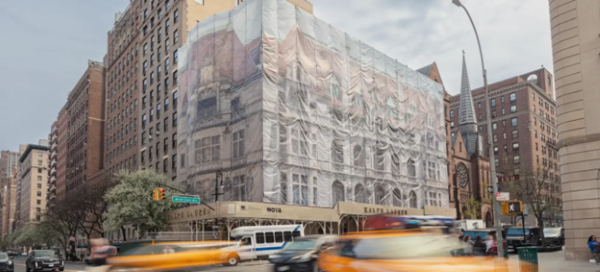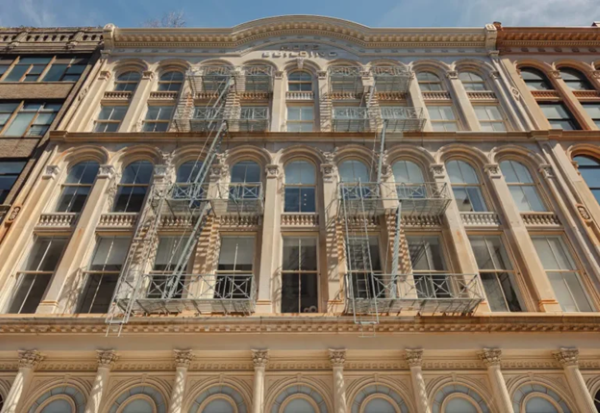The Importance of Retrofitting Older Buildings to Meet Modern Standards


Older buildings have historical charm and architectural beauty, but many don’t meet today’s energy, safety, or environmental standards. Retrofitting these buildings to comply with modern regulations is essential to preserve their heritage while improving functionality. The process includes various upgrades, from energy-efficient systems to facade and stone cleaning, ensuring that buildings not only retain their visual appeal but also serve current and future needs.
In this post, we’ll explore why retrofitting older structures is vital and how it can bring buildings up to date while maintaining their historic significance.
Enhancing Energy Efficiency
Older buildings were often constructed with materials and techniques that lack the insulation or efficiency required today. As a result, they tend to consume more energy for heating and cooling, leading to higher operating costs and carbon footprints.
Retrofitting can dramatically improve a building’s energy efficiency by incorporating:
- modern insulation materials
- double-glazed windows
- energy-efficient lighting and HVAC systems
These upgrades reduce energy consumption, cut costs, and align the building with current environmental standards. Not only does this lower emissions, but it also increases tenant comfort, creating spaces that are more livable and sustainable.
Preserving Historical Significance
While modern upgrades are necessary, maintaining the historical value of older buildings is equally important. Facade and stone cleaning, for example, is a critical part of the retrofitting process. This technique revitalizes the appearance of a building without compromising its original character.
Careful cleaning and restoration of stonework and architectural features can bring out the beauty of an older building while ensuring it fits within the urban landscape. By balancing preservation and progress, retrofitting allows these buildings to remain functional and aesthetically pleasing.
Safety and Compliance
Many older buildings were constructed before modern building codes and safety regulations. Retrofitting can address these shortcomings through the following:
- Structural Reinforcements: Over time, building materials can weaken, posing safety risks. Retrofitting can involve reinforcing structural elements, such as beams, columns, and foundations, to enhance the building’s stability and durability.
- Fire Safety: Modern fire safety standards require specific measures that older buildings may lack. Retrofitting can include installing fire-resistant materials, updated alarm systems, and emergency exits to improve fire safety and evacuation procedures.
- Accessibility Improvements: Ensuring that buildings are accessible to all individuals is a key aspect of modern standards. Retrofitting can involve adding ramps, elevators, and other accessibility features to make buildings more inclusive and compliant with regulations.
By bringing the building up to current safety standards, retrofitting ensures it can withstand both everyday use and potential disasters. Additionally, aside from protecting the occupants, it extends the lifespan of the building itself.
Sustainability and Environmental Impact
Sustainability is at the forefront of contemporary construction practices. Retrofitting older buildings offers a sustainable alternative to demolition and new construction, which require significant resources and energy.
By upgrading plumbing, electrical, and heating systems, retrofitting makes older buildings greener and more energy-efficient. Furthermore, incorporating renewable energy sources like solar panels can reduce dependence on non-renewable resources.
Preserving existing buildings also reduces the demand for new materials and land, making retrofitting a smart, eco-friendly choice.
Enhancing Market Value
Beyond improving functionality, modernizing an older building also boosts its market appeal. With increasing awareness of sustainability and energy efficiency, tenants and buyers are more likely to be attracted to a retrofitted building that meets their needs while reducing costs.
Retrofitting also opens the door to government incentives and tax breaks, which can offset the costs of renovation.
Buildings that meet modern standards are simply more competitive in today’s market, making retrofitting a wise investment for owners and developers.
Conclusion
Retrofitting older buildings is an essential step in preserving their historical value while aligning them with modern standards. Through energy efficiency upgrades, facade and stone cleaning, structural reinforcements, and sustainability improvements, retrofitting ensures that older buildings remain relevant, functional, and safe for the future.
Additionally, investing in retrofitting allows building owners to protect their properties while contributing to a greener, safer, and more sustainable built environment.
To put it simply, retrofitting strikes the perfect balance between preservation and progress, ensuring that our architectural heritage can continue to thrive in a modern world.


